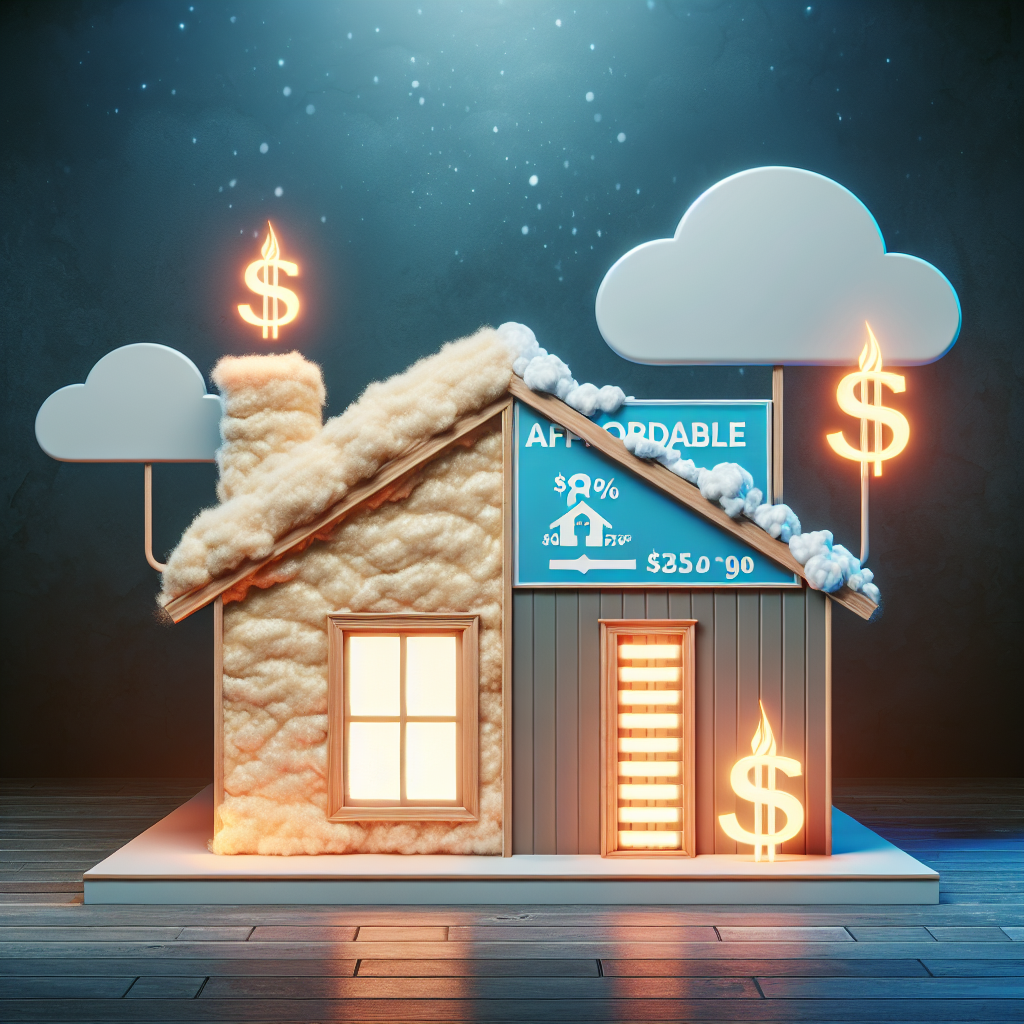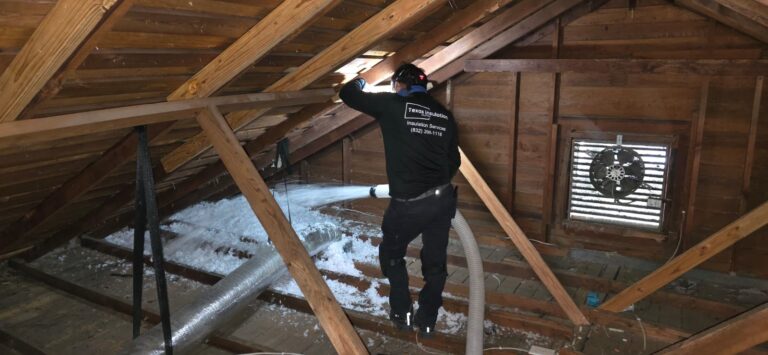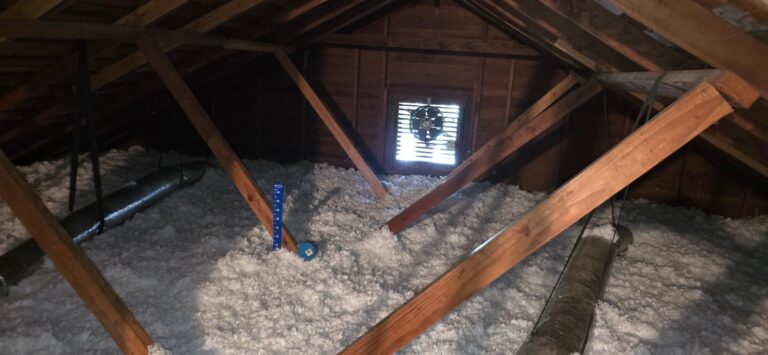-
Table of Contents
“Efficiently insulate your home with blown in insulation – the smart choice for comfort and savings.”
Introduction
Moving blown in insulation is a common method used to insulate homes and buildings. It involves using a machine to blow loose insulation material, such as fiberglass or cellulose, into walls, attics, and other spaces. This method is often preferred over traditional insulation methods, as it can easily fill small and hard-to-reach areas, providing better coverage and energy efficiency. In this process, the insulation material is blown in using a hose, making it a quick and efficient way to insulate a space. In this introduction, we will discuss the benefits and process of moving blown in insulation.
Benefits of Blown In Insulation for Your Home
Insulating your home is an important step in creating a comfortable and energy-efficient living space. While there are various types of insulation available, one option that has gained popularity in recent years is blown in insulation. This type of insulation involves using a machine to blow loose insulation material into the walls, attic, or other areas of your home. In this article, we will discuss the benefits of blown in insulation for your home.
One of the main advantages of blown in insulation is its ability to fill small and hard-to-reach spaces. Unlike traditional batt insulation, which comes in pre-cut sheets, blown in insulation can be easily blown into tight corners and crevices. This makes it an ideal choice for older homes or buildings with irregularly shaped walls and attics. The loose material can also conform to any obstructions, such as pipes or wires, ensuring a complete and thorough coverage.
Another benefit of blown in insulation is its high R-value. R-value is a measure of an insulation material’s ability to resist heat flow. The higher the R-value, the more effective the insulation is in keeping your home warm in the winter and cool in the summer. Blown in insulation has a higher R-value compared to other types of insulation, making it a more efficient choice for your home.
In addition to its insulating properties, blown in insulation also has soundproofing capabilities. The loose material can absorb sound waves, reducing noise from outside sources and creating a quieter and more peaceful indoor environment. This is especially beneficial for homes located in busy or noisy areas.
One of the most significant advantages of blown in insulation is its cost-effectiveness. While the initial cost of installation may be higher compared to other types of insulation, the long-term savings make it a worthwhile investment. The high R-value and energy efficiency of blown in insulation can significantly reduce your heating and cooling costs. This is because it creates a tight seal, preventing air leaks and reducing the workload on your HVAC system. As a result, you can save money on your energy bills and recoup the initial cost of installation over time.
Moreover, blown in insulation is an eco-friendly option for your home. The material used for blown in insulation is typically made from recycled materials, such as shredded newspaper or cellulose fibers. This not only reduces waste but also decreases the demand for new materials. Additionally, the energy-saving properties of blown in insulation can help reduce your carbon footprint, making it a more environmentally responsible choice for your home.
Another advantage of blown in insulation is its fire resistance. The material used for blown in insulation is treated with fire-retardant chemicals, making it less likely to catch fire. This can provide an added layer of protection for your home and your family.
Lastly, blown in insulation is a non-toxic and safe option for your home. Unlike some types of insulation that may contain harmful chemicals, blown in insulation is made from natural and safe materials. This makes it a suitable choice for homes with children or pets.
In conclusion, blown in insulation offers numerous benefits for your home. From its ability to fill small and hard-to-reach spaces to its high R-value and energy efficiency, it is a cost-effective and eco-friendly option for insulating your home. Its soundproofing and fire-resistant properties, as well as its non-toxic nature, make it a safe and practical choice for any household. If you are considering insulating your home, be sure to explore the option of blown in insulation and reap the many benefits it has to offer.
Factors Affecting the Average Price of Blown In Insulation

Blown in insulation is a popular choice for homeowners looking to improve the energy efficiency of their homes. It is a cost-effective and efficient way to insulate attics, walls, and other hard-to-reach areas. However, the average price of blown in insulation can vary greatly depending on a variety of factors. In this article, we will discuss the main factors that can affect the average price of blown in insulation.
One of the main factors that can affect the average price of blown in insulation is the type of insulation material used. There are several types of blown in insulation, including fiberglass, cellulose, and mineral wool. Each type has its own unique properties and benefits, but they also come at different price points. Fiberglass is the most commonly used blown in insulation and is generally the most affordable option. Cellulose, on the other hand, is made from recycled materials and is slightly more expensive. Mineral wool, which is made from natural rock or slag, is the most expensive type of blown in insulation.
Another factor that can affect the average price of blown in insulation is the size of the area that needs to be insulated. The larger the area, the more insulation material will be needed, resulting in a higher cost. Additionally, the accessibility of the area can also impact the price. If the area is difficult to access, such as a tight crawl space or a high ceiling, it may require more labor and equipment, which can increase the overall cost.
The condition of the existing insulation can also affect the average price of blown in insulation. If the old insulation is damaged or needs to be removed, it will add to the cost of the project. In some cases, the old insulation may need to be completely removed before the new insulation can be installed, which can significantly increase the price. On the other hand, if the existing insulation is in good condition, it may be possible to simply add blown in insulation on top of it, which can save on labor and material costs.
The location of the home can also play a role in the average price of blown in insulation. The cost of living and labor rates can vary greatly from one region to another, which can impact the overall cost of the project. Additionally, the climate of the area can also affect the type and amount of insulation needed, which can also impact the price. For example, homes in colder climates may require thicker insulation, which can be more expensive.
The experience and expertise of the insulation contractor can also affect the average price of blown in insulation. It is important to choose a reputable and experienced contractor who has a good track record of installing blown in insulation. While it may be tempting to go with the cheapest option, it is important to consider the quality of work and the materials used. A poorly installed insulation can lead to higher energy bills and other issues in the long run, which can end up costing more in the end.
In conclusion, there are several factors that can affect the average price of blown in insulation. These include the type of insulation material, the size and accessibility of the area, the condition of the existing insulation, the location of the home, and the experience of the contractor. It is important to consider all of these factors when getting quotes for blown in insulation to ensure that you are getting the best value for your money. By understanding these factors, you can make an informed decision and choose the right blown in insulation for your home.
How to Choose the Right Contractor for Blown In Insulation Installation
When it comes to insulating your home, blown in insulation is a popular and effective option. This type of insulation involves using a machine to blow loose insulation material, such as fiberglass or cellulose, into your walls, attic, or other areas of your home. It is a cost-effective and efficient way to improve the energy efficiency of your home and reduce your heating and cooling costs.
However, the success of blown in insulation installation largely depends on the contractor you choose to do the job. With so many contractors out there, it can be overwhelming to know which one to trust with such an important task. In this article, we will discuss how to choose the right contractor for blown in insulation installation.
First and foremost, it is important to do your research. Take the time to research different contractors in your area and read reviews from previous customers. Look for contractors who have experience with blown in insulation installation and have a good track record of satisfied customers. You can also ask for recommendations from friends, family, or neighbors who have recently had blown in insulation installed in their homes.
Once you have a list of potential contractors, it is important to schedule consultations with each one. During these consultations, the contractor will assess your home and provide you with a quote for the job. This is also a great opportunity to ask any questions you may have and get a feel for the contractor’s communication and professionalism.
When discussing the project with the contractor, be sure to ask about their experience and qualifications. It is important to choose a contractor who is licensed, insured, and has experience with blown in insulation installation. You can also ask for references from previous customers and follow up with them to get a better understanding of the contractor’s work.
Another important factor to consider is the type of insulation material the contractor will be using. Different materials have different R-values, which measure the insulation’s ability to resist heat flow. It is important to choose a contractor who uses high-quality insulation material with a high R-value to ensure maximum energy efficiency for your home.
In addition to the insulation material, you should also ask about the equipment and techniques the contractor will use for installation. A reputable contractor will use professional-grade equipment and follow industry best practices for installation. They should also be able to provide you with a detailed plan for the installation process and any necessary preparations that need to be made beforehand.
It is also important to consider the cost of the project. While it may be tempting to choose the contractor with the lowest quote, it is important to remember that quality work comes at a price. Be wary of contractors who offer significantly lower prices than others, as they may be cutting corners or using subpar materials. It is better to invest in a reputable and experienced contractor who will do the job right the first time.
Lastly, make sure to get a written contract from the chosen contractor before any work begins. This contract should outline the scope of the project, the materials and equipment to be used, the timeline for completion, and the total cost. It is important to have a clear understanding of what is expected from both parties to avoid any misunderstandings or issues down the line.
In conclusion, choosing the right contractor for blown in insulation installation is crucial for the success of the project. By doing your research, scheduling consultations, and asking the right questions, you can ensure that you hire a reputable and experienced contractor who will provide you with high-quality insulation and energy efficiency for your home. Remember to always prioritize quality over cost and get everything in writing to protect yourself and your investment.
Q&A
1) What is blown in insulation?
Blown in insulation is a type of insulation material that is installed by blowing it into the desired space using specialized equipment. It is typically made of materials such as fiberglass, cellulose, or mineral wool and is used to improve the energy efficiency and comfort of a building.
2) How is blown in insulation installed?
Blown in insulation is installed by using a machine to blow the insulation material into the desired space, such as an attic or wall cavity. The material is blown in evenly and fills any gaps or voids, providing a seamless layer of insulation.
3) What are the benefits of using blown in insulation?
Blown in insulation offers several benefits, including improved energy efficiency, reduced utility bills, and increased comfort in the home. It also helps to reduce noise levels and can improve indoor air quality by reducing drafts and preventing moisture buildup. Additionally, blown in insulation is a cost-effective and environmentally friendly option for insulating a home.
Conclusion
In conclusion, blown-in insulation is a cost-effective and efficient way to improve the energy efficiency of a home. It can help reduce heating and cooling costs, improve indoor air quality, and provide better soundproofing. With proper installation, it can also last for many years without needing to be replaced. Overall, blown-in insulation is a great option for homeowners looking to improve the comfort and energy efficiency of their homes.






